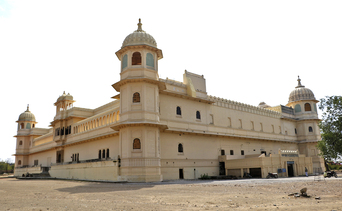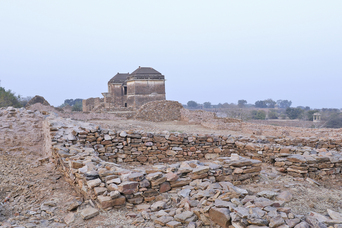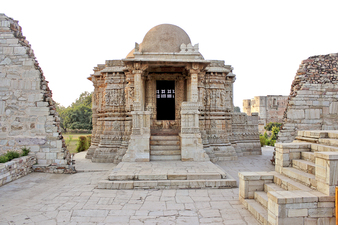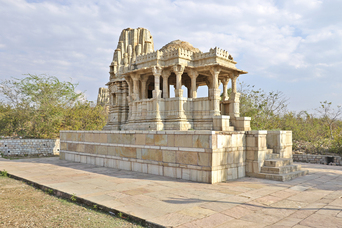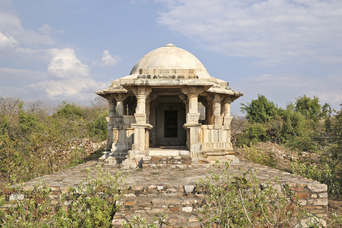
Chittor fort has remained an important monument in India. Chittorgarh is the important ancient site situated from 35 Km. from Bhilwara and 74 Km. from Udaipur districts on the border of the Mewar. Its very name is associated with countless legends of Rajput chivalry. It seems that the Mauryas or Mori took pains and care in making Chittor as their capital. Two inscriptions of Manmori ( maruyan ruler), have been noticed from Chittor. one dated V.E. 770 (713 CE) speaks about 4 Mauryan rulers named Mahesvar, Bhim, Bhoj and Man. One more inscription discovered near the Shiva temple mentions Raja Manbhang of Griharipu caste. They built the Sun temple (Kalika Mata Temple) and other edifices. The presence of Buddhist stupas on the fort indicates that the place remained a centre of Buddhism also. Both Svetambar and Digambar Jains sects dug their roots here. Thus, during the Mauryan period, Vaishnvism , Saivism, Buddhism and Jainism all flourished here. It seems that the progress of Mauryas was checked by the Arab invasion. Subsequently, the place was captured by Bappa Rawal, but soon after, it was taken over by the imperial Pratiharas.
The Pratihara king Nagbhat-I faced the opposition of Dantigurga, the Rashtrakuta of Deccan, who had occupied Ujjain and performed Hiranyagarbha ceremony there. Rashtrakuta king Govind III invaded Chittor and carried out depredations there. He granted the place to the Mauryan ruler Dharanivarah, but his descendants could not remain there and went to Orissa. There is also references of poet Magh's descendant Mahuka living at Chittor, who composed Haramekhala in 831 CE. Inscription of Udaivaraha mentions his long journey from Chittor also.
The Pratihara captured the fort together with the eastern part of Mewar. An inscription of Bhoj Pratihars was discovered from Chittor, which mentions that a school was opened by one of his officers posted there. Allat the Chauhan Dynasty king maintained good relations with the Rashtrakutas and conducted business with the Karnatak country. The Ahar epigraph of V.E. 1010 (953 CE) mentions that the businessmen of Karnataka were also present there, when the temple work was taken up. It seems that Allat killed Pratihara ruler Devapala and became free from their sovereignty. Thus, it may be said that Chittor prospered and thrived during the Pratihara age. Several temples were built and probably the temple near the river Gambhiri was also constructed during this period. It has been fully renovated now. The Sun-temple is built by Pratiharas in the seventh-eight century CE. Later on Pratiharas ruled over it and constructed the temples of Kumbh-Shyam and Kukadeshwar in ninth century CE, then Paramaras in tenth-eleventh century CE and later on Guhilots or Sisodias ruled over this area.
The Chittorgarh fort contains several monuments like as temples, towers, reservoirs, Chhatirs, Palaces and Mosque.




